Page 1 of 2: 12
|
|
odd growth on face = sticky substance
|
|
| johnes81 |
Posted on 10-09-2017 15:52
|
|
Member Location: Posts: 1978 Joined: 15.10.16 |
Berlin - August I don't know where to post this query. I don't want to upset anyone by posting here. I found a Calliphorid with an odd growth around the face. I have no idea what is this growth. Is this a larva/parasite? a birth defect? infection as a result of attempted predation? I don't see thalli so not a fungus? Any help is appreciated. I cannot find any data about parasites of Calliphorids. Also, any recommendations regarding dissection. I have no idea where to begin. Maybe just enter from the occiput? I want to preserve whatever it is in the face. Thank You for your Time and Effort. Edited by johnes81 on 10-09-2017 17:23 John and Nini. Naturalists not experts. |
|
|
|
| Tony Irwin |
Posted on 10-09-2017 16:02
|
|
Member Location: Posts: 7168 Joined: 19.11.04 |
I don't think this is a parasite or an infection - it looks more like something has stuck to the face. Before you start dissection, try washing the head in water or alcohol or acetone. If it's stuck on with sugar, then the water should shift it, if it's some sort of resin, then the alcohol or acetone may work. Either way, I think you will find that the fly is intact and normal under all the gunk.
Tony ---------- Tony Irwin |
|
|
|
| johnes81 |
Posted on 10-09-2017 16:16
|
|
Member Location: Posts: 1978 Joined: 15.10.16 |
Hello Tony and Thank You for replying. I thought so too but I've examined the head in a microscope allready. The soft orange area appears to be attached to the head. I followed it around the face and it disappears around the mouth area. I see hairs growing out from the orange substance. I suppose that it may be a sticky substance stuck to the hairs. I will take your advice and rinse it off in alcohol. Thanks for your Time. I will update this thread after cleansing the head. John and Nini. Naturalists not experts. |
|
|
|
| johnes81 |
Posted on 10-09-2017 16:17
|
|
Member Location: Posts: 1978 Joined: 15.10.16 |
mouth area
John and Nini. Naturalists not experts. |
|
|
|
| johnes81 |
Posted on 10-09-2017 17:22
|
|
Member Location: Posts: 1978 Joined: 15.10.16 |
so it is some sort of substance. You are correct that the head is normal. The substance was stuck to the antenna and proboscis very well. The antenna and the entire proboscis came off whenever I tried to apply pressure to pull the substance away from the face. I didn't see anything in the alcohol other than tissue and the minerals stuck to the face. I guess this Calliphorid was licking something sticky  I've attached some photos. Thank You Sir Tony. John and Nini. Naturalists not experts. |
|
|
|
| johnes81 |
Posted on 10-09-2017 17:22
|
|
Member Location: Posts: 1978 Joined: 15.10.16 |
palpi
John and Nini. Naturalists not experts. |
|
|
|
| johnes81 |
Posted on 10-09-2017 17:22
|
|
Member Location: Posts: 1978 Joined: 15.10.16 |
antenna
John and Nini. Naturalists not experts. |
|
|
|
| Tony Irwin |
Posted on 10-09-2017 20:21
|
|
Member Location: Posts: 7168 Joined: 19.11.04 |
My grandson has a similar appearance when he's eating ice-cream! 
Tony ---------- Tony Irwin |
|
|
|
| johnes81 |
Posted on 10-09-2017 23:41
|
|
Member Location: Posts: 1978 Joined: 15.10.16 |
 I didn't expect this reply. Good one Sir Tony. I had a nice laugh. I didn't expect this reply. Good one Sir Tony. I had a nice laugh.I guess the fly found something delicious and buried its face in the substance. I'm Thankful for your Time Sir Tony. I wish for you a Pleasant Night. John and Nini. Naturalists not experts. |
|
|
|
| Paul Beuk |
Posted on 11-09-2017 08:25
|
|
Super Administrator Location: Posts: 19208 Joined: 11.05.04 |
I think it just was the prilinum that did not set properly on emergence...
Paul - - - - Paul Beuk on https://diptera.info |
|
|
|
| Colobo |
Posted on 11-09-2017 10:06
|
|
Member Location: Posts: 78 Joined: 03.05.07 |
Difficult tu tell from the pictures but this remember something I observed some years ago on several Calliphoridae in sorting malaise trap samples. It was pollinic sacs of an orchid stuck to the face and antenna of the flies, in a somewhat different way in each specimen. The pollinic sacs were sticken to the fly face by a kind of short stem. It was obviously resulting of a mecanism of the stamens allowing to use the flies visiting the flowers for carrying the pollinic sacs and ensure distant pollination. Interestingly only calliphorids of genus Onesia had such pollinic sacs sticken on face. |
|
|
|
| johnes81 |
Posted on 11-09-2017 11:14
|
|
Member Location: Posts: 1978 Joined: 15.10.16 |
Hello Colobo. I am stunned by your post because I have not read something like this before. I like Calliphoridae but I am not yet scientific about them. I have very little experience with diptera. I've only studied for the past year. I've observed and recorded data for the last four years but this is the first year of proper study for me. " Interestingly only calliphorids of genus Onesia had such pollinic sacs sticken on face." I am stunned because you are absolutely correct that this is Onesia and I haven't shown a photo. I've examined three similar species and two are Onesia. I cannot yet place an id because only O. floralis is listed for Berlin area. This fly is not floralis. Dr. Knut Rognes does not have drawings of the ovipositor for austriaca and kowarczi. I can eliminate zumpti because of a Swiss document co-authored by Dr. Knut Rognes. I assume that this fly is austriaca but I intend to write to an expert for help. Mostly because a very similar species matches Bellardia not Onesia. Anyway, this species with the "odd growth" is in fact Onesia. I suspect that this substance is pollinic sacs but I also think that Sir Paul is correct. I still think that the fly also has a deformation of some sort. I say this because the ovipositor matches Onesia but one of the spermathecae is deformed. I will post more photos here if the interest remains. I would love to read more opinions about this fly. very interesting posts here. I am excited that my fellow dipterists are interested in this subject. Good stuff  I will be back to post some photos... John and Nini. Naturalists not experts. |
|
|
|
| johnes81 |
Posted on 11-09-2017 12:08
|
|
Member Location: Posts: 1978 Joined: 15.10.16 |
head 1
John and Nini. Naturalists not experts. |
|
|
|
| johnes81 |
Posted on 11-09-2017 12:09
|
|
Member Location: Posts: 1978 Joined: 15.10.16 |
head angle 2
John and Nini. Naturalists not experts. |
|
|
|
| johnes81 |
Posted on 11-09-2017 12:09
|
|
Member Location: Posts: 1978 Joined: 15.10.16 |
face 1
John and Nini. Naturalists not experts. |
|
|
|
| johnes81 |
Posted on 11-09-2017 12:10
|
|
Member Location: Posts: 1978 Joined: 15.10.16 |
face 2
John and Nini. Naturalists not experts. |
|
|
|
| johnes81 |
Posted on 11-09-2017 12:11
|
|
Member Location: Posts: 1978 Joined: 15.10.16 |
spermathecae (ovipositor matches Onesia but this odd spermatheca makes me think that this fly has a birth defect.)
Edited by johnes81 on 03-10-2017 10:47 John and Nini. Naturalists not experts. |
|
|
|
| Paul Beuk |
Posted on 12-09-2017 08:00
|
|
Super Administrator Location: Posts: 19208 Joined: 11.05.04 |
The figure of the spermathecae of Onesia floralis in Rognes'book on Scandinavian Calliphoridae shows paired oblong spermathecae and an unpaired, heart-shaped spermatheca. I cannot discern any pollinaria in your photographs though there certainly is some loose pollen on the head. Paul - - - - Paul Beuk on https://diptera.info |
|
|
|
| johnes81 |
Posted on 12-09-2017 11:39
|
|
Member Location: Posts: 1978 Joined: 15.10.16 |
Thank You for your Time Sir Paul. I appreciate your comments in this thread. I have the Blowflies of Fennoscandia and Denmark. I have looked at this fly for days and I cannot agree that it is floralis. I've tried to make it be floralis but no success. I notice that Dr. Rognes mentions that one of the spermathecae has an "abnormal biolbed apex" but it certainly doesn't look like the one in my photo. The spermatheca in my photo is strongly biolobed like a heart shape. Fascinating! I suppose that it could be an extreme abnormality but the ovipositor doesn't match floralis. I conclude that it is Onesia but it looks strange. I wonder if the ovipositor is also an abnormality? I know that Dr. Rognes mentions the possibility of a weak presutural ia on floralis but how does one define weak? I see a well-developed bristle. The bristle is not strong but it is well developed in my opinion. [attachment will be posted later today] I will post some photos of all three problematic species. You can see that they all have similarities but nothing is conclusive to floralis. I intend to write to Dr. Rognes about this. Meantime, I'm happy to include everyone with this subject. Thus, I will add some photos here today. Maybe more opinions will help... John and Nini. Naturalists not experts. |
|
|
|
| johnes81 |
Posted on 12-09-2017 11:44
|
|
Member Location: Posts: 1978 Joined: 15.10.16 |
"I cannot discern any pollinaria in your photographs though there certainly is some loose pollen on the head." yes, I agree. I am stumped. I have more photos that show this at different angles. I will post them later today. Maybe we can conclude that this is a deformity. Especially with the spermatheca and the ovipositor not matching. What an odd but fascinating fly! John and Nini. Naturalists not experts. |
|
|
|
Page 1 of 2: 12
| Jump to Forum: |


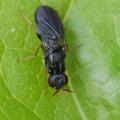



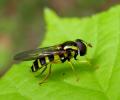
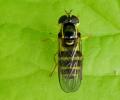

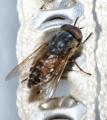
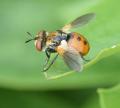



 but don't see the image in the post.
but don't see the image in the post.